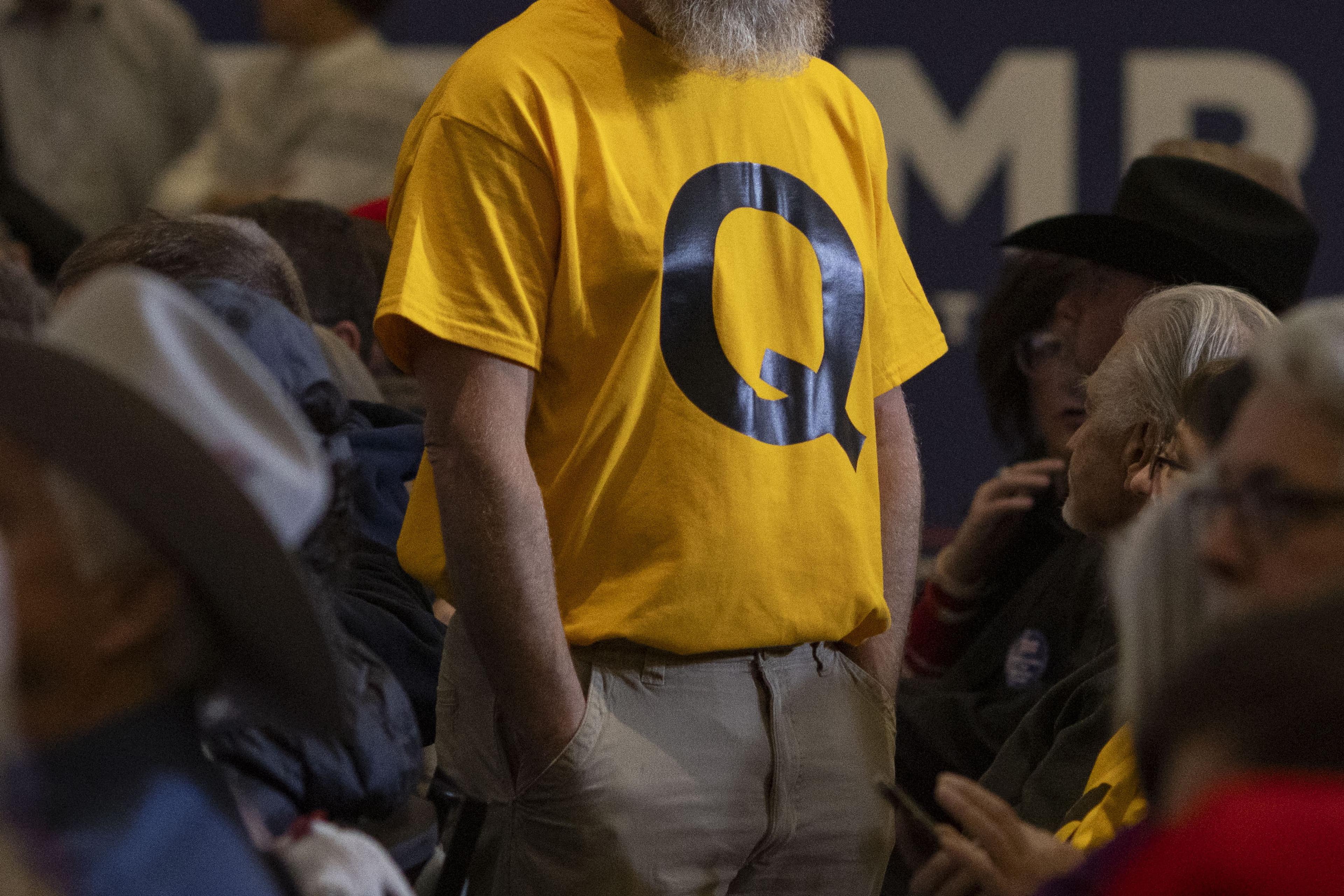Accusations of racism in politics long predate the current era. But, by the beginning of the 21st century, they tended to revolve around what were often described as coded phrases or ‘dogwhistles’. One classic example in the United States is the use of ‘inner city’ instead of ‘Black’. Another is the rhetoric of ‘states’ rights’ as a signifier for Southern racism – ‘states’ rights’ having been a rallying cry for the Southern states in the Civil War, and for segregationists in the Civil Rights Era. Such phrases allow racist sentiments to be expressed in ways that can pass as innocently non-racial concerns. For some time, the accepted wisdom in political psychology was that more open expressions of racism would doom a national campaign. Two political psychologists in 2005 suggested that, going forward, ‘the racialisation of politics’ might ‘increasingly take place mainly at the level of code words, or words that are fundamentally non-racial in nature that have, through the process of association, assumed a strong racial component’. It was more than reasonable to expect that the 2016 US Presidential election would follow this pattern.
Of course, things did not turn out according to expectations. With Donald Trump on the political scene in the US, the racism became much less subtle, with the candidate and then president calling Mexicans ‘rapists’, advocating a ban on Muslims entering the US, and using phrases like ‘shithole countries’. And although Trump initiated the change, it was not confined to him. Such language has become common enough that there was only brief media attention when a Republican senator suggested in 2022 that reparations for descendants of enslaved people was money for ‘the people that do the crime’, or when a Republican congressperson in 2021 referred to a fellow congressperson who is Muslim as a member of ‘the jihad squad’. Utterances like this have become, to a significant extent, the background noise of our politics. This Trump-era change needs explaining.
I have very much not been the only one struck by this. But, puzzlingly, many people have turned to dogwhistles for an explanation. A dogwhistle, literally speaking, is a whistle that can be heard by dogs and not humans; it provides a way of secretly sending a message. The term, however, has come to be used in discussions of political communication. Here it means a way of communicating whereby something that violates widely held norms – eg, a racist sentiment – is veiled so that only some people perceive the true meaning.
One kind of dogwhistle functions like a secret code: the number 88 is for most of us just a number. But for neo-Nazis it signifies ‘Heil Hitler’, because ‘H’ is the eighth letter of the alphabet. Another kind of dogwhistle is even sneakier, working not like a code but like an unconscious nudge. The most famous example of this is the ‘Willie Horton ad’ that George H W Bush used in his presidential campaign against the Massachusetts governor Michael Dukakis in 1988. This ad did not mention race, but showed the face of Horton (a Black man) while describing the violent crimes he’d committed while on furlough from a Massachusetts prison. Important work by the political scientist Tali Mendelberg indicated that this ad activated racial attitudes outside of voters’ awareness, making racially resentful white voters more inclined to vote for Bush.
Both kinds of dogwhistles are powerful tools. The coded ones facilitate communication and organisation among people engaging in behaviour that violates societal norms. The others can manipulate people to act (or vote) in ways that they might not if they were aware of what was happening. (Mendelberg also showed that, when voters were prompted to consider a possible racial element to the Horton ad, the effect she had previously observed disappeared.)
I can see, then, why people find dogwhistles so fascinating. However, they are not sufficient to explain the change in political speech in recent years. When Trump called Mexicans rapists and advocated a Muslim ban, he was not using subtle, coded terms that only some people would pick up on. He was not just nudging people toward racist views without their awareness. The racial elements of these utterances, which clearly targeted people of colour, were very much out in the open.
The tactic on display was something that is less often discussed: the use of ‘figleaves’. Traditionally, the image of a figleaf was used by artists to cover the body parts (think Adam and Eve) that they were not supposed to show in their paintings. As I use the term, a figleaf is a communicative device that provides just a bit of cover for something that one isn’t supposed to show in public – like racism.
To see how this works, let’s first take a closer look at Trump’s call for a Muslim ban. Here is a statement, cast in the third person, that he read aloud in December 2015:
Donald J Trump is calling for a total and complete shutdown of Muslims entering the United States until our country’s representatives can figure out what the hell is going on.
The anti-Muslim message is loud and clear, and not hidden at all. But the end of the statement is the bit that I want to focus on: ‘until our country’s representatives can figure out what the hell is going on’. For some people, this phrase provided reassurance that Trump isn’t racist – because a real racist would want to ban Muslims period, not just while we figure out what’s going on. This is a figleaf: it provides just enough cover for the racism that isn’t acceptable to show in public.
One reason that figleaves like this work is that many white people accept what the sociolinguist Jane Hill called ‘the folk theory of racism’. This view sets a very high bar for what counts as racist: a racist has to consciously believe in the biological inferiority of people of colour, and intend to be racist. Somebody like this would want to ban Muslims forever, not just temporarily. Similarly, they wouldn’t suggest that ‘some’ Mexican immigrants are good people, as Trump did. Nor would they have a Black friend, or declare themself to be non-racist, this line of thinking goes.
Reports like these help to normalise the sentiments expressed, while distancing the speaker from them
A view such as this one makes it very easy for utterances to serve as figleaves for racism. These figleaves allow a voter to continue supporting a candidate who has made a comment that might have worried them. They don’t need to become fully convinced that the candidate is non-racist; it’s enough in many cases to be uncertain about whether the utterance indicates racism. When I examined discussions among Trump supporters online, I found people who worried about Trump’s views on Mexicans being reassured by those who pointed out that he also said some of them are good. ‘I didn’t hear him say anything racist against any race,’ one person posted. ‘What I did hear him say is, “Illegal Mexicans bring drugs, crime, and are rapists, but I’m sure some are good people.” Seriously, whats racist about that?’ Another Tweeted: ‘Trump is not racist … Trump is not against all mexicans just the illegals.’
Another classic form of figleaf involves reporting the words of others, either specifically (‘John Smith says…’) or in a vague, handwavy way (‘Lots of people are saying…’) This is a great way to avoid responsibility for what one is inserting into the discourse. We see this technique in the British politician Enoch Powell’s infamous ‘Rivers of Blood’ speech in 1968, in which he described a constituent (a ‘quite ordinary working man’) as saying: ‘In this country in 15 or 20 years’ time the black man will have the whip hand over the white man.’ Reports like these help to normalise the sentiments expressed, while distancing the speaker from them.
Figleaves are not for everyone. Some people don’t need them: fully committed racists are happy with blatantly racist comments, no figleaves required. Many people won’t be convinced by them: antiracist activists, for example, will see right through the attempted reassurance. For others, though, they provide just what is needed – a licence to go on supporting the person they feel drawn to.
The power that figleaves have to shift what is considered racism – to make someone think, for instance, that it isn’t racist after all to enact a ban on Muslims – is dangerous indeed. And it can help to explain how we moved from a political scene in which experts confidently predicted that expressions of racism would grow increasingly subtle and covert to the situation we’ve found ourselves in now.
But figleaves are not just for racism. Whenever someone wants to make norm-violating ideas seem more acceptable, figleaves are an effective technique. Think of controversial commentators like Glenn Beck or Joe Rogan. As they introduce wildly implausible conspiracy theories, they often lead with the thought that they are ‘just wondering’ or ‘just asking questions’, or they report what others are saying, carefully distancing themselves from commitment. Here’s a typical example, from Rogan’s podcast of April 2021, with figleaves bolded:
This doctor was saying ivermectin is 99 per cent effective in treating Covid, but you don’t hear about it because you can’t fund vaccines when it’s an effective treatment … I don’t know if this guy is right or wrong. I’m just asking questions.
These kinds of phrases are effective figleaves for spreading shocking claims, because one doesn’t need to believe something to wonder about it or ask questions. Some people who might hesitate to share their uncle’s post asserting that Bill Gates is monitoring people through microchips in vaccines may be more comfortable sharing a post that just ‘wonders’ whether this is true. And this helps the messages to spread. As this happens over and over again, ideas that would never have garnered mainstream attention in the past come to seem like normal parts of public discourse. And, with repetition and normalisation, they can seem increasingly plausible.
Political norms have shifted so that what was once inconceivable becomes ordinary
So, what can one do about these tactics? A good start would be to spread awareness of figleaves. Right now, people feel more comfortable if they encounter a figleaf attached to something that looks a bit dodgy; more willing to vote for a candidate and more willing to share a message. It’s important that people start to realise that figleaves can be used to manipulate them into accepting what they wouldn’t previously have accepted. When people come across a figleaf, they should see it as a warning sign to proceed with a little more caution. Not to assume something nefarious is happening – after all, sometimes it’s totally fine to just ask questions – but to look more closely. If you encounter a potential figleaf, you might consider what you would think of a claim if that part of it wasn’t there. You could also consider whether the speaker might be trying to get you to go along with something that would otherwise make you uncomfortable. If what they are saying would make you recoil without the figleaf, ask yourself just how reassuring you should find it.
In recent years, in too many places, political norms have shifted so that what was once inconceivable becomes ordinary. These shifts often begin from changes in political discourse, engineered to move previously outrageous racist and conspiracist views into the mainstream. Understanding the mechanisms that facilitate these changes is a vital step toward learning how to combat them.








